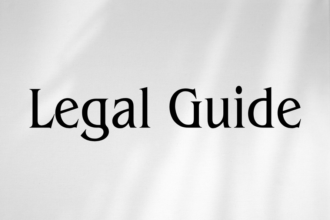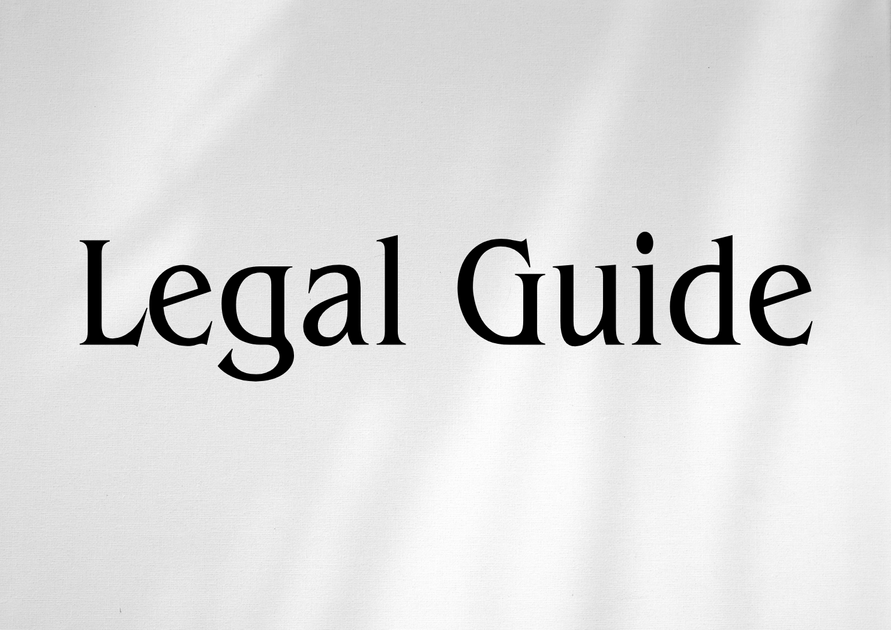Introduction: The Imperative of Airworthiness and Aircraft Certification in Qatar
In an era marked by rapid expansion of the aviation sector within the Gulf region, the intersection of airworthiness and aircraft certification laws stands as a critical point for businesses, operators, and legal professionals. Qatar, leveraging its strategic geography and state-of-the-art infrastructure, is positioned as a key aviation hub in the Middle East. Amidst dynamic regulatory shifts across GCC countries—including the UAE—the harmonization, understanding, and application of Qatari airworthiness regulations has become essential for stakeholders who operate across jurisdictions or serve clients with Qatari aviation interests.
This article delivers a comprehensive, consultancy-grade analysis of airworthiness and aircraft certification under Qatari law, illuminating the legal landscape, recent updates, and practical compliance strategies. It offers clear insights for executives, HR managers, compliance officers, aviation businesses, and cross-border legal practitioners active in the UAE. As the UAE continues to update its aviation legal framework—driven by the 2025 legislative agenda—understanding neighboring jurisdictional nuances is crucial for legal risk mitigation, business planning, and operational excellence.
Table of Contents
- Overview of the Regulatory Framework in Qatar
- Legal Foundations: Qatari Aviation Law
- Airworthiness Criteria and Certification Processes
- Recent Legal Updates and Implications for UAE Stakeholders
- Compliance Strategies for UAE-Based and International Operators
- Comparative Analysis: UAE Versus Qatari Airworthiness Law
- Practical Case Studies and Hypothetical Scenarios
- Risks of Non-Compliance and Penalty Structures
- Conclusion: Proactive Compliance in an Evolving Legal Landscape
Overview of the Regulatory Framework in Qatar
The Role of the Qatar Civil Aviation Authority (QCAA)
The regulatory regime for airworthiness and aircraft certification in Qatar is principally administered by the Qatar Civil Aviation Authority (QCAA), the statutory body established pursuant to Law No. 15 of 2002 promulgating the Civil Aviation Law. The QCAA operates under the policy directions of the Ministry of Transport and Communication and is charged with oversight of civil aviation safety, air navigation, licensing, and registration functions.
Aircraft intending to operate within Qatari airspace or registered in Qatar must comply fully with QCAA standards on design, maintenance, continuing airworthiness, and operational fitness. QCAA regulations are broadly harmonized with International Civil Aviation Organization (ICAO) standards; however, there are distinctive procedures and compliance thresholds that operators and owners must navigate.
Key Legislative Instruments
- Civil Aviation Law (Law No. 15 of 2002): The core legislative document, detailing definitions, authority roles, and penal provisions.
- QCAA Authority Regulation Series 100 and 200: Stipulating technical standards for airworthiness and aircraft certification.
- Ministerial Decrees: Regularly updating application procedures, safety obligations, and compliance audits, including recent guidance on digital maintenance records and unmanned aerial systems.
Legal Foundations: Qatari Aviation Law
Civil Aviation Law: Structure and Scope
Law No. 15 of 2002 forms the foundational statute for all civil aviation matters in Qatar, from aircraft registration and air operator certification to accident investigation and enforcement. Chapter Three and Four of the law are most pertinent to airworthiness requirements.
The law defines “airworthiness” as the condition under which an aircraft and its components comply with prescribed design, manufacturing, and ongoing maintenance standards, thereby ensuring operational safety and compliance with both national and ICAO requirements. The QCAA is vested with broad investigatory and enforcement powers to issue, renew, suspend, or revoke airworthiness certificates (Articles 29–36).
Mandatory Certification Requirements
- All aircraft operated in Qatari jurisdiction must possess a valid QCAA-issued airworthiness certificate (Art. 29).
- Foreign-registered aircraft require QCAA validation of their home country airworthiness certification prior to operations or overflights (Art. 30, Ministerial Decree 2019/3).
- Supplemental type certificates (STC) and major modification approvals must be obtained directly from QCAA Technical Standards division.
Airworthiness Criteria and Certification Processes
Key Components of Airworthiness Evaluation
The QCAA prescribes a multi-stage process for airworthiness evaluation, ensuring compliance with internationally recognized safety and performance benchmarks. These include:
- Type Certification: Validation of aircraft design according to QCAA, ICAO, and, where relevant, EASA standards.
- Production Certification: Demonstration that manufacturing methods and component sourcing meet approved criteria.
- Initial and Continuing Airworthiness: Ongoing inspections, scheduled and unscheduled maintenance, and component tracking under a Continuing Airworthiness Management Organization (CAMO) framework.
Airworthiness Certificate Types
| Certificate Type | Description | QCAA Reference |
|---|---|---|
| Standard Certificate | For commercial passenger and cargo operations | Regulation 105.1 |
| Restricted Certificate | For specialized or experimental purposes | Regulation 105.4 |
| Special Flight Permit | Allows ferry or non-standard flights with restrictions | Regulation 105.7 |
Certification Application Process
- Submission of design and maintenance documentation to QCAA.
- Physical inspection and conformity assessment by authorized QCAA inspectors.
- Inegration of digital records in line with Ministry of Transport Circular 2023/11 for improved traceability.
- Issuance or renewal of certificate upon successful audit.
Recent Legal Updates and Implications for UAE Stakeholders
2023-2025 Regulatory Updates
In response to increased air traffic and the proliferation of new aircraft technologies, recent amendments and decrees have updated airworthiness compliance obligations:
- Ministerial Decree No. 18 of 2023: Mandates electronic airworthiness records and data interoperability between QCAA and GCC authorities by 2025.
- QCAA Guidance Circular 2024/06: Outlines stricter component traceability and digital maintenance requirements, effective Q1 2025.
Implications for UAE-Based Operators and Lessors
UAE entities operating, leasing, or maintaining aircraft in Qatar—or partnering with Qatari operators—must now:
- Ensure all documentation is digitized and compatible with Qatari platforms.
- Upgrade maintenance data management systems to match new traceability standards.
- Assess existing lease and maintenance contracts for additional liability under QCAA rules.
Compliance Strategies for UAE-Based and International Operators
Developing a Proactive Compliance Framework
Given the increasing regulatory scrutiny, UAE legal consultants recommend the following strategies for robust cross-border aviation compliance:
- Legal Gap Analysis: Conduct a comparative review of UAE GCAA and QCAA airworthiness requirements to ensure all processes meet or exceed the higher standard.
- Documentation Digitization: Prioritize conversion and centralization of maintenance records as per QCAA and Ministerial Decree No. 18 of 2023.
- Contractual Protections: Revise lease, aircraft management, and charter agreements to allocate responsibilities and liabilities clearly under both Qatari and UAE law.
- Staff Training and Certification: Implement regular training for flight, ground, and maintenance personnel on QCAA updates, with a focus on digital systems and interoperability.
Visual Suggestion: A flow diagram of the end-to-end compliance process—from documentation preparation through post-certification audits—would help clarify these steps for client stakeholders.
Best Practices for Multinational Operators
- Establish direct liaison offices or retain specialist aviation counsel in Qatar for real-time legal updates.
- Monitor GCC harmonization efforts under ICAO and Arab Civil Aviation Organization (ACAO) frameworks—anticipating future convergence of airworthiness requirements.
- Coordinate with in-house and external counsel to respond rapidly to regulatory change notices and QCAA circulars.
Comparative Analysis: UAE Versus Qatari Airworthiness Law
Comparing Airworthiness and Certification Provisions
| Aspect | Qatar (QCAA) | UAE (GCAA) |
|---|---|---|
| Governing Law | Law No. 15/2002, Ministerial Decrees | Federal Law No. 20/1991 and amendments |
| Electronic Records Mandate | Mandatory by 2025 (Decree 18/2023) | Progressive (GCAA Digital Initiative, Advisory Circular 2022-04) |
| STC & Modifications | QCAA approval required | GCAA approval required, mutual recognition for some EASA/FAA STCs |
| CAMO Requirements | Strict QCAA structure, QAR oversight | UAE GCAA CAMO approval and audit cycle |
| Punitive Enforcement | On-the-spot fines; certificate suspension | Notice to remedy, escalating administrative penalties up to AED 5 million |
Summary Commentary
While both jurisdictions require robust compliance systems, Qatar is pushing towards more aggressive digital integration in maintenance and certification records. For UAE operators, this foregrounds the necessity of harmonizing document workflows and contractual terms when engaging in Qatari aviation markets.
Practical Case Studies and Hypothetical Scenarios
Case Study 1: Cross-Border Lease Compliance
Scenario: A UAE-based lessor contracts with a Qatari operator to lease a new narrow-body aircraft. The lessor’s maintenance records are maintained on a UAE-approved platform, not yet digitized to QCAA standards.
Legal Implications: With Ministerial Decree No. 18/2023 coming into force, failure to provide mandated digitized records results in the Qatari operator being unable to register the aircraft or obtain a renewed airworthiness certificate. Such a delay may trigger contractual penalties or indemnity clauses.
Recommended Solution: Parties should proactively review lease agreements, build in transition time for digitization, and clarify which party bears the cost and risk of QCAA non-acceptance.
Case Study 2: CAMO Audit Risk
Scenario: A multinational charter operator based in Dubai operates flights to and from Doha. An unannounced QCAA audit discovers maintenance record gaps due to non-compatible tracking formats.
Legal Implications: The operator faces a certificate suspension and commercial groundings, impacting legal liability under Qatari law (Article 35). UAE-based head office may also face reputational risks and secondary liabilities in client contracts.
Recommended Solution: Implement regular mock audits, synchronize maintenance systems, and embed dual-compliance checks for both UAE and Qatari requirements.
Risks of Non-Compliance and Penalty Structures
Administrative and Criminal Penalties
Failure to adhere to airworthiness and certification obligations under Qatari law invites a range of punitive responses, as per Articles 52–57 of Law No. 15/2002 and subsequent Ministerial Decrees. Penalties may include:
- Immediate suspension or revocation of airworthiness certificates
- On-the-spot fines up to QAR 500,000 per incident for documentation or maintenance lapses
- Potential criminal prosecution for falsified records or gross negligence, with imprisonment and aggravated sanctions
Notably, QCAA enforcement action is swift, particularly in the face of perceived safety risks, and penalties may be levied against both the operator and any accountable lessor or maintenance provider whose non-compliance contributed to the infraction.
Visual Suggestion:
A comparative penalty chart, highlighting the escalation of penalties for first-time vs. repeat offenses, would greatly clarify risk exposure for executives and compliance officers.
Mitigating Legal Exposure
- Embed stringent compliance reporting and escalation protocols.
- Regularly refresh staff training and conduct quarterly compliance audits.
- Secure robust aviation-specific legal insurance to absorb potential penalty-related losses.
Conclusion: Proactive Compliance in an Evolving Legal Landscape
The dynamic evolution of airworthiness and certification law in Qatar, mirrored by concurrent reforms across the UAE, signifies a new era of rigorous regulatory oversight and digital modernization. For UAE-based stakeholders, maintaining a vigilant, future-oriented compliance posture is both a legal necessity and a commercial imperative. The rapid pace of legal updates—epitomized by Ministerial Decree No. 18 of 2023 and related QCAA circulars—demands ongoing legal risk assessment, agile contract management, and the adoption of cutting-edge digital workflows.
Clients and businesses with cross-border aviation interests are urged to:
- Partner with specialized legal counsel versed in both UAE and Qatari law.
- Invest in technological upgrades that guarantee seamless and compliant document management.
- Monitor forthcoming GCC regulatory harmonization initiatives to anticipate further integration and compliance burdens.
Staying ahead in this shifting legal environment requires clarity, diligence, and the counsel of expert advisors—ensuring that both operational continuity and legal defensibility are never at risk.




